"It is a thing of no great difficulty to raise objections against another man's digital map--
nay, that is very easy;
but to produce a better in its place is a work extremely troublesome."
--Plutarch
- Introduction
"Aristagoras...came then to Sparta during the
reign of Cleomenes, and when he had an audience with the King (so the Spartans
report) he brought with him a bronze tablet on which the map [chalkeon pinaka] of
all the earth was engraved, and all the sea and all the rivers." .." Summary:
we Ionians need help to remain free, if would be a disgrace if you, the strongest
of the Greeks abandon us. Moreover, the Persians lack courage, and even wear
pants. Most importantly, they are very rich. " take
that city and then you need not to fear to challenge Zeus himself for riches "
Cleomenes postponed his decision for three days. On the third day he asked
Aristagoras how many days journey it was from the Aegean to Susa. .
" “Thereupon Aristagoras, who had managed the
rest so cleverly, and succeeded in deceiving the king, tripped in his speech
and blundered; for instead of concealing the truth, as he ought to have done
if he wanted to induce the Spartans to cross into Asia, he said plainly that
it was a journey of three months. Cleomenes caught at the words, and, preventing
Aristagoras from finishing what he had begun to say concerning the road,
addressed him thus:- "Milesian guest, quit Sparta before sunset. This
is no good proposal that you make to the Lacedaemonians, to conduct them
a distance of three months' journey from the sea."
- The map may have looked
something like this and something like it may have been set up at Rome under Augustus
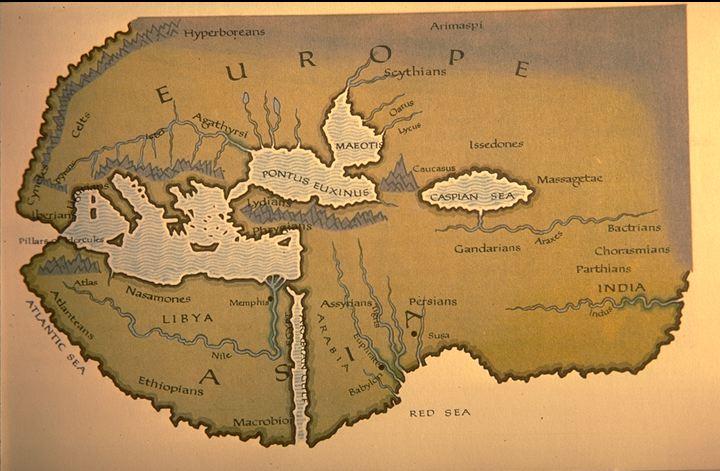
- There were other problems
with these maps. For example, the island of Britain was depicted in several
ways.
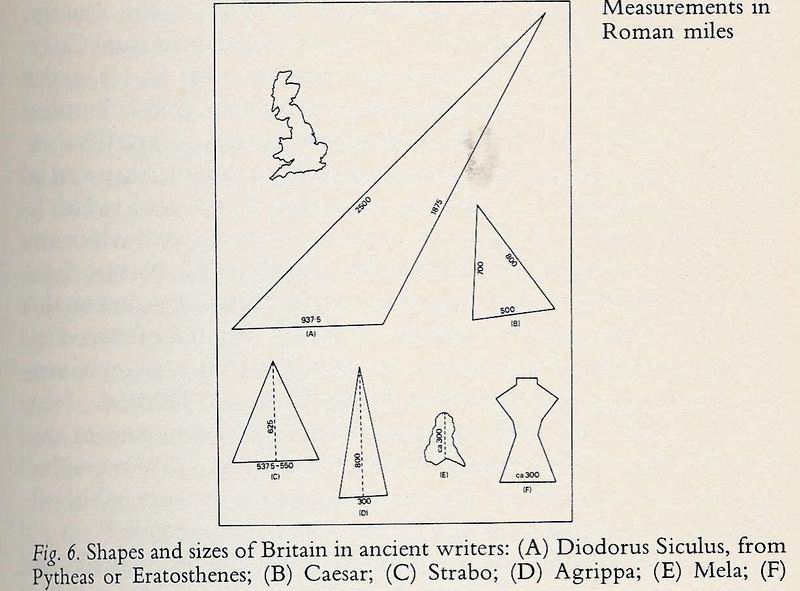
- Effective maps ought
to be more than static representations.
- Consider this map of
ship wrecks; note that causes are not clear at all. Storm? war? pirates?
navigational errors?
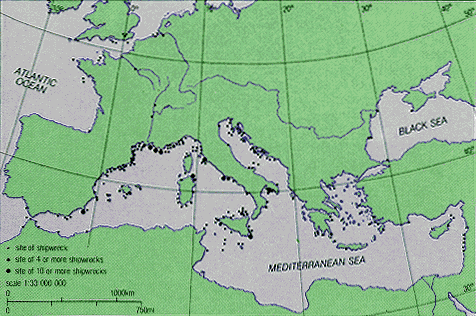
- They also ought
to represent change. Consider this map of Germany in 1919.
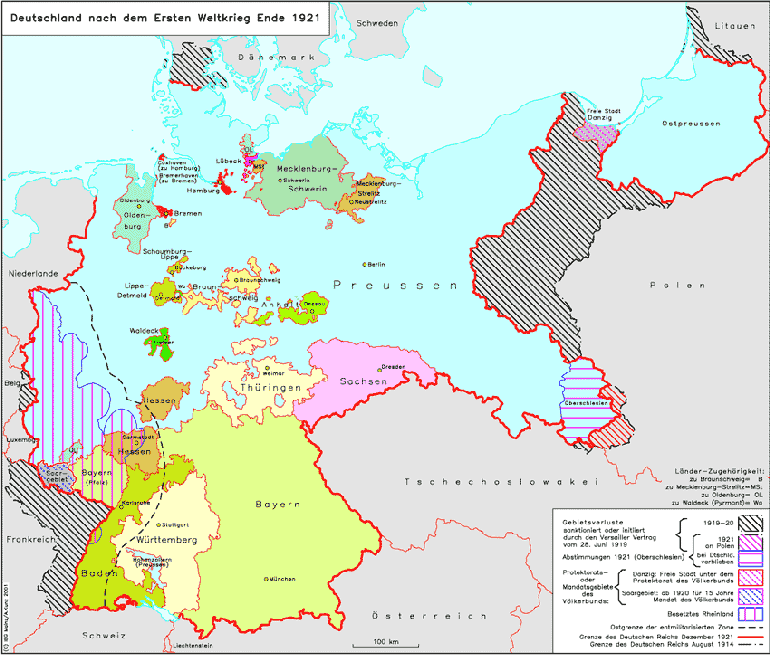
Is this map a success? Do we understand any better
why the Germans hated the Versailles treaty? What
do we need to know to make sense of map? How can
it be improved?
- Perhaps it might
be better to render "before" and "after" maps. Consider these two popular maps
of the Mediterranean in 60 and 44 BC.
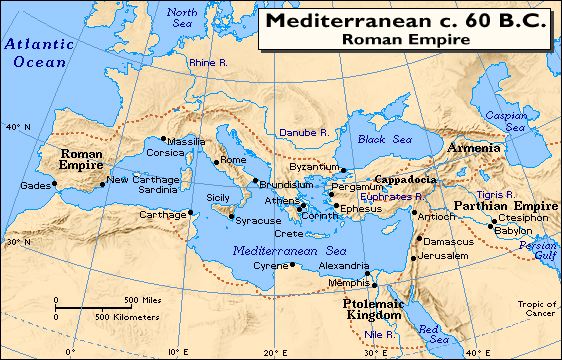
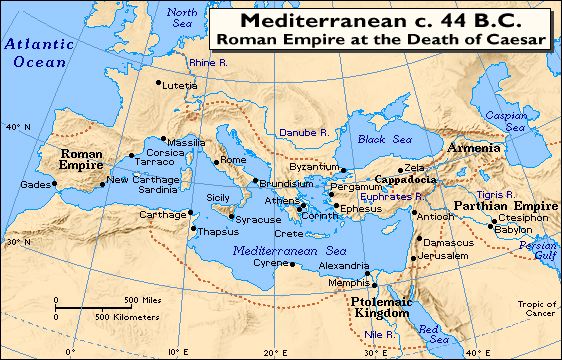
What would it take
to improve these maps? - Now consider this
map of Europe during the barbarian invasions.
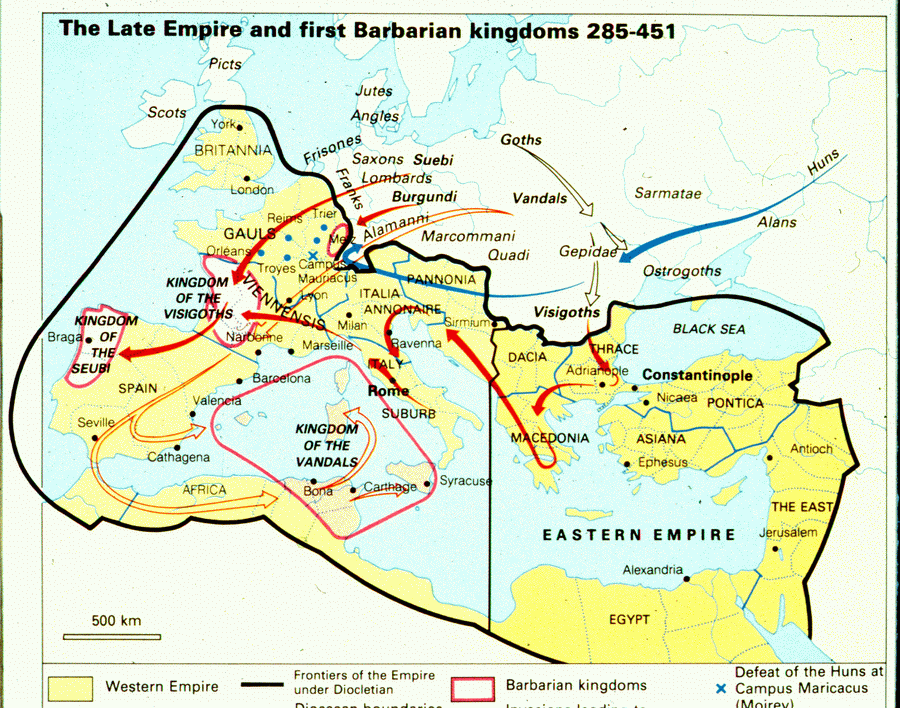
What can the typical undergraduate say about the fall of the Roman Empire
on the basis of this map? Does he or she have any sense of the fundamental
causes of political change in this period? or why urbanization was in
decline?
- In fact, historians
want to measure the phases of transformation and also understand the
slow and often irregular changes that occurred. .
- The central question
remains: how can we best represent historical change. Here are some models
or options to consider:
- A static map may
be enough to represents relatively simple events, here the battle of
Mantinea. But the material may be confusing with lines, colors and text.
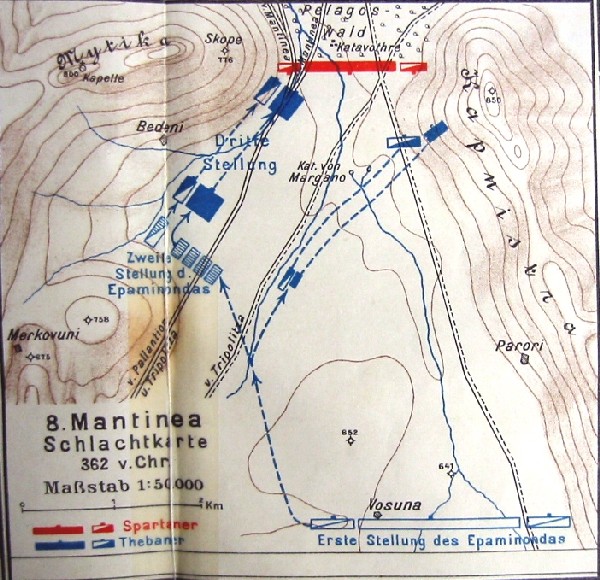
- Nevertheless, Krommeyer-Veith often needed to employ a series of maps
to represent a relatively straightforward battle. Here Leuctra. .
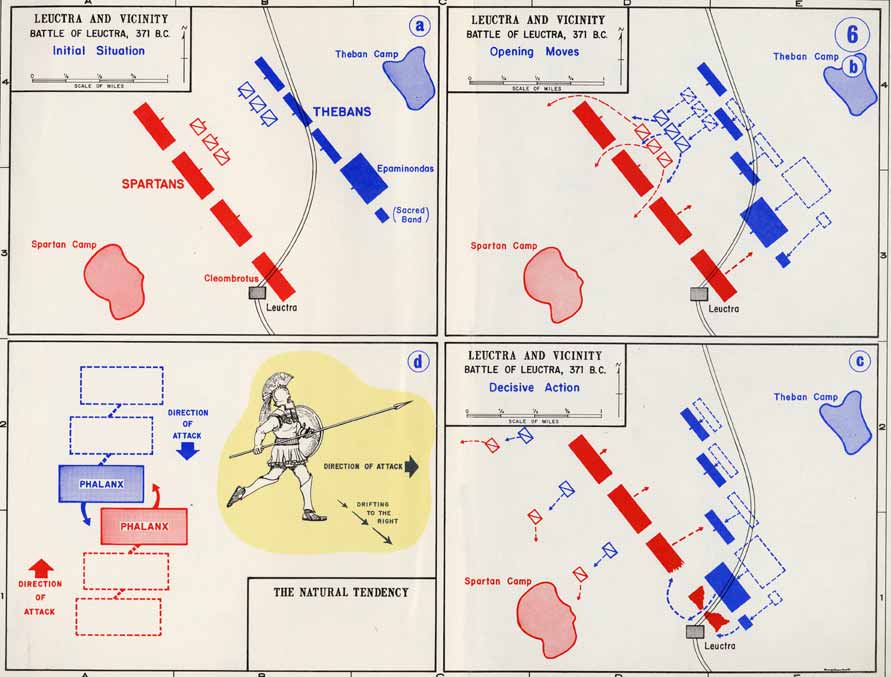
- Here is an important
example of a map that relies on a variety of sources and scholarship. Note how the red lines are used to suggest the progress of the disease across Europe over a two year period.
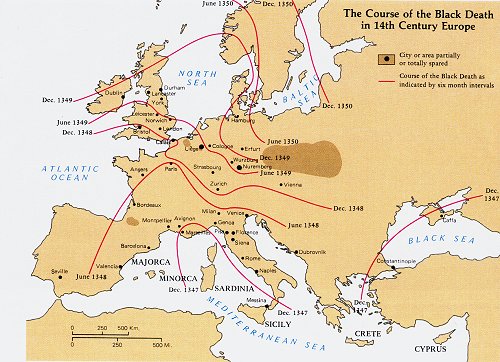
- The more factors
one introduces into a map the more complex and incomprehensible it
may become. Consider this famous 19th C. map showing the fate of the Napoleonic forces in 1812. .
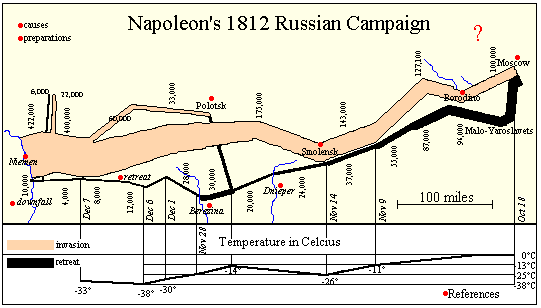
- Though our maps
are a marginal improvement on those seen by Herodotus, the fact remains
that however desirable it may be to represent the dynamics of historical
change it is in fact very difficult to do so.
"It is a thing of no great difficulty to raise objections against another man's digital map--nay, it is very easy; but to produce a better in its place is a work extremely troublesome." --Plutarch
- Here I will give you
four examples of how we have developed the material in our new system.
- The Problem: "States'
Rights" and "slavery" belong to the most important factors leading
to the American civil war. But why was slavery so important to the
South? Slavery
and Cotton.
- The Problem:
Romanization. In the biography of his father-in-law, Tacitus describes what Agricola
had done to encourage peace and romanization. The elite should be challenged
to devote their resources to the construction of civic amenities, and
in the Histories (4.74) he notes in the famous speech attributed to Petillus Cerialis the following: "Gaul always
had its kingdoms and wars until you [Gauls] submitted to our authority...from
you we have never asked for more that what was needed to support the
peace (taxes collected in order to support armies). Everything else
we hold in common with you. You often command our legions and govern
this and other provinces. There are no privileges and no distinctions
and no exclusions [nihil
separatum clausumve]. Tacitus
had then a very clear concept: Romanization meant urbanization, peace, integration.
But was he right?
- The Problem: Athens and Classical Culture: how unique is the former?? Greek cities and intellectual activity: Was Athens so distinctive? or is there a general receptive intellectual atmosphere in the Greek city-states?
- The Problem: Was the Crisis of the 3rd Century due to external forces? or to internal collapse?
- Role of academies Europe, 1500 to 1800. NOTE: significant university reform does not begin until after 1825.
- In conclusion:
- We are not offering
a technological breakthrough.
- The main advantage
here is to arrangement of static material so that the whole is greater
than the sum of the parts.
- The observer has
the opportunity the consider and evaluate a variety of factors (not
limited to those here).
- We believe that
this system allow a considerable body of scholarly research to be presented
in such a way that it gives both beginners and advanced student new
insights into historical problems.
- If nothing else,
we hope that those present leave with a more critical understanding
of what constitutes a good historical map, and what needs to be done
to make them better.










